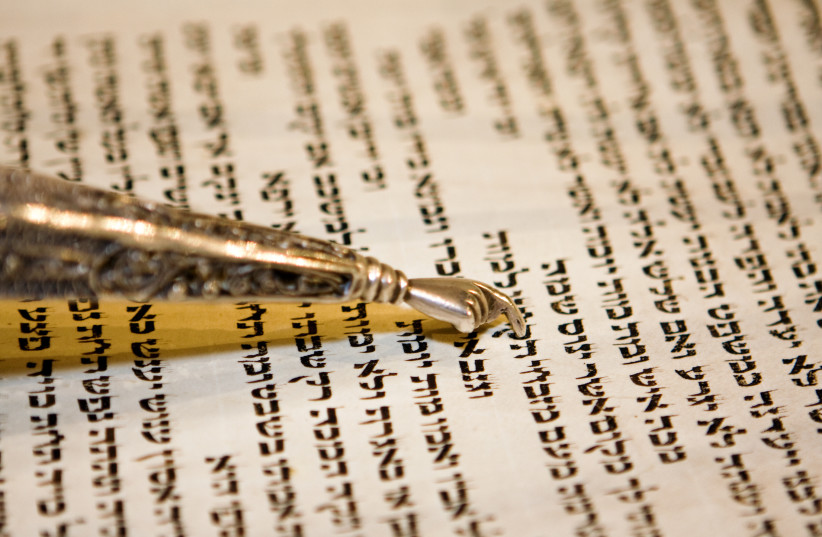In the spirit of Anita Diamant’s groundbreaking The Red Tent, Michelle Cameron merges biblical episodes with fictional elements to create her newest novel, Babylon: A Novel of Jewish Captivity.
Babylon traces the story of a Jewish family, violently wrested from its land in Judea after the destruction of Solomon’s Temple, through the family’s years of exile in Babylon. The story begins in 586 BCE and ends 63 years later, 15 years after the proclamation allowing the Jews to return to Judea to begin rebuilding the Temple.
In an interview with The Jerusalem Post, Cameron stated that she got the idea for Babylon while writing her first historical novel, The Fruit of Her Hands. “In [The Fruit of Her Hands], my heroine witnesses the burning of 24 wagon loads of volumes of Talmud in a Paris market square. As the wagons are rumbling past her, she recalls Psalm 137 – ‘By the Rivers of Babylon’ – and recalls how Judaism had flourished despite our various exiles. That scene was the impetus for this book,” she said.
Weaving a tale of biblical personalities
Like all biblical fiction, Babylon interweaves the stories of actual biblical personalities – in this case, Jeremiah, Ezra, Daniel, and King Cyrus – with fictional characters. In doing so, Cameron gives real biblical characters fictionalized personalities, such as portraying the prophet Ezra as being rude and prickly.
Cameron hopes this novel will reach beyond a Jewish audience. “While most of my Jewish historical novels were intended primarily for Jewish readers, Babylon touches upon a shared biblical heritage and fictionalizes several of the prophets, especially Daniel and Ezra. So I would hope that my readership will expand with this novel to include readers of many faiths who enjoy biblical fiction,” she expressed.

Like her other work, Babylon has a lot to say about the theme of assimilation. Three siblings in one Jewish family take different paths once arriving in Babylon. One utterly assimilates, worships idols, and lives in great financial comfort. One becomes a servant in the palace and declines the chance to buy her freedom because she no longer believes in a compassionate God. The third works as a Hebrew scribe while maintaining Babylonian alliances. Cameron said, “The dilemma of assimilation versus maintaining religious traditions” is “a theme that runs through all my novels.”
Cameron revealed that she writes about “little-known and often neglected periods of Jewish history.” In Babylon, she proposes what it might have been like for the Judean residents to adjust to decades of life in Babylon and how they might have adapted to the pressures of exile. The novel is rich with descriptions of the tension between the Babylonian and Judean lifestyles.
One thing Cameron does exceptionally well in this novel is to bring life to the intermarriages between Judean men and Babylonian women. Similarly, she humanizes the breakup of families over the prophet Ezra’s demand that foreign wives and children be banished after the return to Jerusalem.
Another episode that struck me as very realistic was the family argument over who will return to Jerusalem after King Cyrus granted the Judean exiles the chance to return.
However, Cameron does get some minor things wrong. For example, she puts the image of an apple from the Garden of Eden into the mouth of Baruch ben Neriah, the biblical scribe of the prophet Jeremiah. In Hebrew scripture and Jewish tradition, the identity of the forbidden fruit is hidden. The apple image entered popular culture through Christianity.
Like every writer of biblical fiction, Cameron takes certain liberties with her biblical characters. For example, she put the famous story of Daniel in the lions’ den into the mouth of one of her main characters, writing about it as if it were a vision her fictional character had just before passing away. Biblical purists might find these small issues jarring. Then again, biblical purists might do well to avoid the genre of biblical fiction entirely.
There are a lot of characters in Babylon, many with unfamiliar Babylonian names, making it hard to keep track of them. Cameron said that she always creates a file of character names when she’s writing and admitted that in Babylon, “so many of the historical names were similar to one another.” A glossary of character names would have been helpful.
Overall, Cameron skillfully blends themes of intermarriage and assimilation, idol worship, the subjugation of women, and palace intrigue into one lavish story.
Babylon: A Novel of Jewish Captivity
By Michelle Cameron
Wicked Son
432 pages; $18.99
